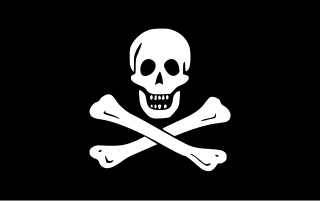
Piracy is an act of robbery or criminal violence by ship or boat-borne attackers upon another ship or a coastal area, typically with the goal of stealing cargo and other valuable goods. Those who conduct acts of piracy are called pirates, and vessels used for piracy are called pirate ships. The earliest documented instances of piracy were in the 14th century BC, when the Sea Peoples, a group of ocean raiders, attacked the ships of the Aegean and Mediterranean civilisations. Narrow channels which funnel shipping into predictable routes have long created opportunities for piracy, as well as for privateering and commerce raiding.

Jean Lafitte was a French pirate and privateer who operated in the Gulf of Mexico in the early 19th century. He and his older brother Pierre spelled their last name Laffite, but English language documents of the time used "Lafitte". This has become the common spelling in the United States, including places named after him.
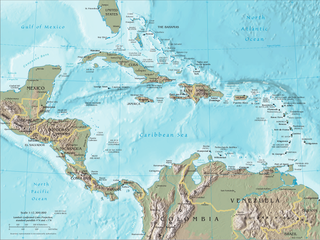
The era of piracy in the Caribbean began in the 1500s and phased out in the 1830s after the navies of the nations of Western Europe and North America with colonies in the Caribbean began hunting and prosecuting pirates. The period during which pirates were most successful was from the 1650s to the 1730s. Piracy flourished in the Caribbean because of the existence of pirate seaports such as Port Royal in Jamaica, Tortuga in Haiti, and Nassau in the Bahamas. Piracy in the Caribbean was part of a larger historical phenomenon of piracy, as it existed close to major trade and exploration routes in almost all the five oceans.
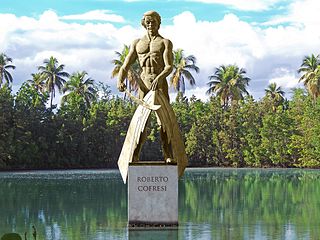
Roberto Cofresí y Ramírez de Arellano, better known as Pirata Cofresí, was a pirate from Puerto Rico. He was born into a noble family, but the political and economic difficulties faced by the island as a possession of the Spanish Empire during the Latin American wars of independence meant that his household was poor. Cofresí worked at sea from an early age which familiarized him with the region's geography, but it provided only a modest salary, and he eventually decided to abandon the sailor's life and became a pirate. He had previous links to land-based criminal activities, but the reason for Cofresí's change of vocation is unknown; historians speculate that he may have worked as a privateer aboard El Scipión, a ship owned by one of his cousins.
Benjamin Hornigold (1680–1719) was an English pirate who operated during the tail end of the Golden Age of Piracy.

Pirate havens are ports or harbors that are a safe place for pirates to repair their vessels, resupply, recruit, spend their plunder, avoid capture, and/or lie in wait for merchant ships to pass by. The areas have governments that are unable or unwilling to enforce maritime laws. This creates favorable conditions for piracy. Pirate havens were places where pirates could find shelter, protection, support, and trade.
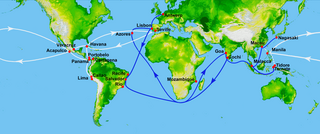
The Spanish treasure fleet, or West Indies Fleet, was a convoy system of sea routes organized by the Spanish Empire from 1566 to 1790, which linked Spain with its territories in the Americas across the Atlantic. The convoys were general purpose cargo fleets used for transporting a wide variety of items, including agricultural goods, lumber, various metal resources such as silver and gold, gems, pearls, spices, sugar, tobacco, silk, and other exotic goods from the overseas territories of the Spanish Empire to the Spanish mainland. Spanish goods such as oil, wine, textiles, books and tools were transported in the opposite direction.
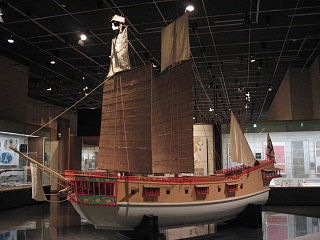
Red seal ships were Japanese armed merchant sailing ships bound for Southeast Asian ports with red-sealed letters patent issued by the early Tokugawa shogunate in the first half of the 17th century. Between 1600 and 1635, more than 350 Japanese ships went overseas under this permit system.

Charles Vane was an English pirate who operated in the Bahamas during the end of the Golden Age of Piracy.
Joseph Baker [Joseph Boulanger] was a Canadian pirate, known primarily for the failed mutiny and hijacking of the merchant schooner Eliza in 1800.

Limahong, Lim Hong, or Lin Feng, well known as Ah Hong or Lim-A-Hong or Limahon, was a Chinese pirate and warlord who invaded the northern Philippines in 1574. He built up a reputation for his constant raids to ports in Guangdong, Fujian and southern China. He is noted to have twice attempted, and failed, to invade the Spanish city of Manila in 1574.
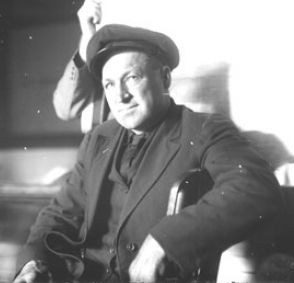
Dan Seavey, also known as "Roaring" Dan Seavey, was an American sailor, fisherman, farmer, saloon keeper, prospector, U.S. marshal, thief, poacher, smuggler, hijacker, procurer, and timber pirate in Wisconsin and Michigan and on the Great Lakes in the late 19th to early 20th century.

Piracy in the ancient Mediterranean dates back at least as far as the Bronze Age. The roots of the word "piracy" come from the ancient Greek πειράομαι, or peiráomai, meaning "attempt". This morphed into πειρατής, or peiratēs, meaning "brigand," and from that to the Latin pirata, where the modern English word pirate originated. According to the classical historian Janice Gabbert, "The eastern Mediterranean has been plagued by piracy since the first dawn of history." The Bronze Age marked the earliest documented wave of piracy, as it is difficult to differentiate piracy from trade during earlier periods.

Piracy in the 21st century has taken place in a number of waters around the world, including the Gulf of Guinea, Strait of Malacca, Sulu and Celebes Seas, Indian Ocean, and Falcon Lake.

M/T Brillante Virtuoso was a Greek-owned, Liberian-flagged suezmax tanker damaged beyond repair as part of an insurance fraud, which involved a faked hijacking by Yemenis posing as Somali pirates in the Gulf of Aden on 6 July 2011. A British High Court found that the faked attack was orchestrated and instigated by the vessel's beneficial owner, Marios Iliopoulos, who was at the time experiencing significant financial difficulties. As of 2022, Iliopoulos has not faced criminal prosecution for his role in the staged attack on the Brillante Virtuoso.

A river pirate is a pirate who operates along a river. The term has been used to describe many different kinds of pirate groups who carry out riverine attacks in Asia, Africa, Europe, North America, and South America. They are usually prosecuted under national, not international law.

Bartolomeu Português (1623–1670) was a Portuguese buccaneer who attacked Spanish shipping in the late 1660s. Português was responsible for the creation of the first "Pirate's Code".

The Atlantic World refers to the period between European colonization of the Americas (1492-) and the early nineteenth century. Piracy became prevalent in this era because of the difficulty of policing this vast area, the limited state control over many parts of the coast, and the competition between different European powers. The best known pirates of this era are the Golden Age Pirates who roamed the seas off the coasts of North America, Africa, and the Caribbean.

The Flying Gang was an 18th-century group of pirates who established themselves in Nassau, New Providence in the Bahamas after the destruction of Port Royal in Jamaica. The gang consisted of the most notorious and cunning pirates of the time, and they terrorized and pillaged the Caribbean until the Royal Navy and infighting brought them to justice. They achieved great fame and wealth by raiding salvagers attempting to recover gold from the sunken Spanish treasure fleet. They established their own codes and governed themselves independent from any of the colonial powers of the time. Nassau was deemed the Republic of Pirates as it attracted many former privateers looking for work to its shores. The Governor of Bermuda stated that there were over 1,000 pirates in Nassau at that time and that they outnumbered the mere hundred inhabitants in the town.
Piracy kidnappings occur during piracy, when people are kidnapped by pirates or taken hostage. Article 1 of the United Nations International Convention against the Taking of Hostages defines a hostage-taker as "any person who seizes or detains and threatens to kill, to injure, or to continue to detain another person in order to compel a third party namely, a State, an international intergovernmental organization, a natural or Juridical person, or a group of people, to do or abstain from doing any act as an explicit or implicit condition tor the release of the hostage commits the offense of taking of hostages ("hostage-taking") within the meaning of this convention." Kidnappers often try to obtain the largest financial reward possible in exchange for hostages, but piracy kidnappings can also be politically motivated.


















